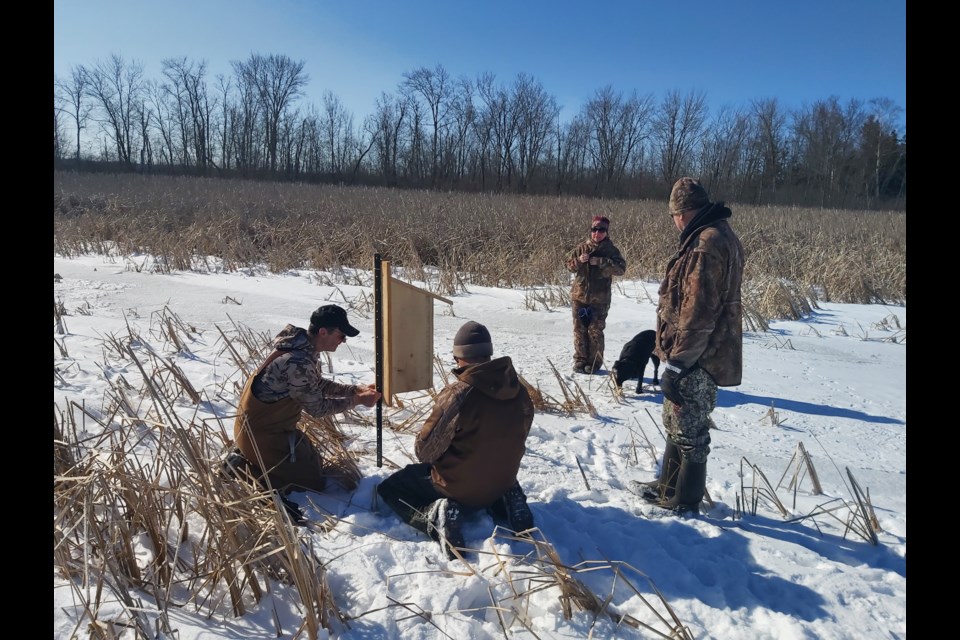A few months ago, members of Delta Waterfowl North Bay and Scouts Canada Powassan combined forces to build wood duck boxes.
Wood ducks are a species of duck found in the area.
Last weekend seven of 12 boxes were placed at the Cranberry Marsh in Callander by volunteers who pulled them to the site using sleighs.
The remaining boxes will be placed at two other locations in the region.
“Delta Waterfowl Foundation is a non-profit organization operating in both Canada and the United States. Its mission is to provide knowledge, and science-based solutions that efficiently conserve water life and secure the future for waterfowl hunting,” explained local chapter volunteer Tim Toeppner.
“It has been our mission through the years, that for every duck that we shoot, we like to try and bring two back through wildlife management programs.”
Toeppner says projects like wood duck boxes serve to enhance the duck population.
“Through proper regulations, and harvest limits, we can produce as many or more ducks than we can take out. So, we can create a sustainable duck harvest for generations to come which includes the scouts and people like my granddaughter who comes out with me now.”
The boxes were placed on steel posts about four feet above the water level.
“That way they can get to the water as quickly as possible without predators getting at them. We’re trying to get the highest rate of survival as possible. Their instinct is to go towards the water when they come out, “said Toeppner.
“The box itself is approximately 28 inches deep with an overhanging slanted roof to keep water and snow out of it. About three-quarters of the way up there is an oval hole just large enough for the ducks to fly in and out of.”
The boxes are filled with natural materials such as grass or wood shavings which the birds pat down to make their nest.
“The birds will add some more of their own stuff or throw stuff out. At the point when they have their little ones, they’re probably looking at 10 to 15 eggs on average, but that doesn’t mean they all survive,” said Toeppner.
“On the inside we use a type of mesh, so when they are ready to leave, the little ones with their nails can crawl up the mesh to the hole and then they can just pop out onto the ground because they don’t fly very well at that point, if at all.”
Volunteers clean out the boxes in January or February when they are easily accessible by snow machine or snowshoes, refilling them in preparation for the spring.
“At that point you can look to see what eggs are in there, because not all eggs hatch, or it might not even be a wood duck in there. It might be a variety of other ducks or birds that lived there.”
“Depending on the year and the weather, near the end of March or mid-April, they’ll be starting to look at moving into these boxes so they can have their incubation period and move on from there.”
There is evidence of success at other wood duck boxes spread out across the region.
“It can take a year or two for them to get in there, but we had a number of success rates where we did find broken eggshells, so we know that they worked. So, it was quite exciting to see,” said Toeppner.
“We want people to understand that just because we hunt, it doesn’t mean we don’t want to participate in conservation and wildlife management of these birds.”
He points out there is more to hunting than just harvesting.
“We’re always looking for volunteers, and we’re always looking for ways to enhance membership and enhance knowledge of what we do as far as Delta Waterfowl and duck hunting in general.”
The volunteers will anxiously be looking for evidence of duck use when they go back to clean out the boxes.



